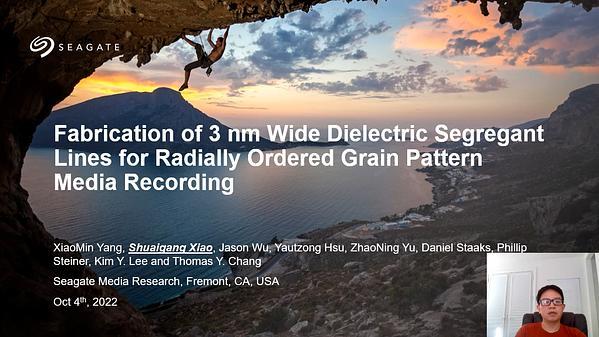Would you like to see your presentation here, made available to a global audience of researchers?
Add your own presentation or have us affordably record your next conference.
Permanent magnets are an essential material in many electrification technologies, such as electric vehicles and Air mobility. So, Many efforts have paid for enhanced magnetic flux density and robust high temperature for electrification technologies application.
As a representative example, efforts are being made to reduce the negative temperature coefficient coercive force and use less rare earth by developing NdFeB magnet.
Among the rare-earth-free magnets candidates, MnBi alloy have been regarded as one of the most attractive candidates with promising magnetic properties and the positive temperature coefficient coercivity . The theoretical (BH)max value at room temperature of the LTP MnBi is about 17 MGOe and can reach a high real value of 6.5 MGOe at 400 K . This magnetic performance of the LTP MnBi is can be replace NdFeB magnets in high-temperature magnet applications.
This study has been developed based on Density functional theory(DFT) calculation and experimental. First, thermodynamic calculations were used for MnBi lattice modeling to select substitutable elements for Mn and Bi lattice sites, and then DFT calculations were used to predict magnetic moments. The MnBi-X alloy candidate material selected through prediction was manufactured using the melt spinning method. A vibratory sample magnetometer (VSM) was used to evaluate the magnetic properties and a trial and error method was used to finally optimize the MnBi alloy composition.
MnBi-Sb magnetic powder has a comparative advantage over ferrite magnets and has the same performance as rare earth bonded magnets. (magnetic flux density 4kG, coercive force 9kOe and coercive force coefficient 0.68~0.91%/K)
References:
1. Yang-Ki Hong, AIP Advances., 3, 052137 (2013)
2. S. Kavita, Journal of Magnetism and Magnetic Materials., Vol. 377, P. 485(2014)
3. C. Curcio,Physics Procedia., Vol. 75, P. 1230 (2015)
4. Sumin Kim, Journal of Alloys and Compounds., vol 708, p1245 (2017)
5. A.M. Gabay, Journal of Alloys and Compounds., vol. 792, p.77 (2019)
6. Truong Xuan Nguyen, Physica B., vol. 552, p.190, (2018)

Fig. 1 X-Ray Diffraction (XRD) data of the Mn-Bi-Sb alloys.

Fig. 2 Analysis of M-H curve in Mn-Bi-Sb alloys.
